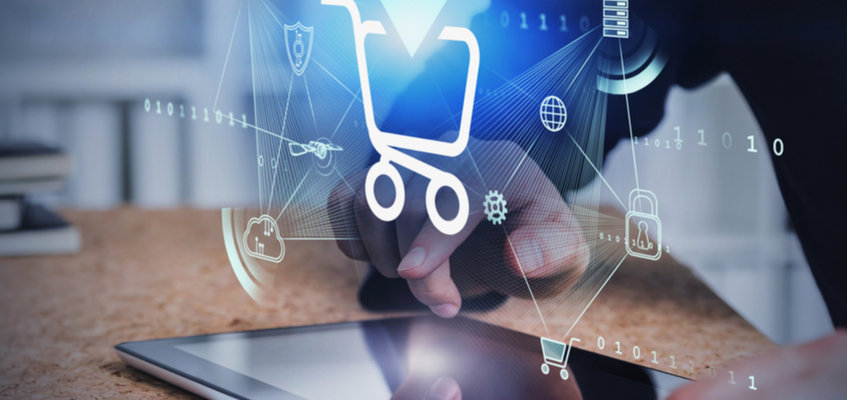
The Future of eCommerce: Trends and Observations
In this insightful talk James Allum, Regional VP of Europe at Payoneer, speaks with Callum Campbell, CEO of Linnworks to understand the e-commerce landscape we now find ourselves in and what the future may hold for e-commerce businesses of all sizes.
In 2020 e-commerce has clearly been exploding and it seems the future has literally arrived on our doorstep. As a result, businesses everywhere have had to learn on the fly how to get to grips with the new reality that has sprung up on us literally overnight.
Of course, with this explosion has also come a lot of noise from companies scrambling to grab their slice of the ecommerce pie. Rising above this noise has never been easy, but the rush to digital marketplaces has heightened these challenges for all.
Smaller businesses will have also felt the pain of access to supply chains over the last year or so. In addition, the current pandemic has meant some markets close while others open and so keeping up with the rapid pace of change and knowing which markets are available to sell to has also been a source of difficulties for both large and small businesses alike.
So, what trends have we begun to see over the last 12 months that could carve out the future for e-commerce moving forward?
E-Commerce Trends from 2020
According to Campbell, the big trend concerns e-commerce penetration and the big surge in online shopping that saw about 10 years of growth occur in just a matter of months. Of course, while e-commerce has been on an upwards trajectory for a while now, even pre-Covid, the last 12 months have shown just how dramatic a jump this trend has taken, and shows now sign of receding back to previous levels. Many consumers who are new to online shopping have gotten on board too, which has also been a major factor behind this boost.
Another trend has been a shift of selling directly to the consumer. This is the idea that brands and manufacturers are bypassing their traditional retail networks and selling directly to the end consumer. By doing so they can increase their profit margins on each sale as well as begin building direct relationships with their customers. They do this by gathering data on them and understanding them much better. In turn this helps them develop their products and marketing to provide more of what the customer wants which creates a direct line of communication with them that they use to great profit. Of course, while this is not something necessarily new, during these covid-era times, this has accelerated rapidly.
There is also the rise of the effortless economy. This is the idea that consumers expect effortless commerce and the standards that consumers expect are rising. For example, over the last few months we’ve started to see Facebook and Instagram becoming increasingly commerce enabled. Commerce is, in effect, moving close to the consumer. Wherever the consumer is spending their time online, that’s where commerce is following them to. This makes for an effortless experience for the consumer and provides a new challenge for brands and retailers in how to reach them.
Finally, one of the biggest trends Campbell sees in recent months is the sheer strength of marketplaces. Marketplaces now represent over 50% of the volume in the e-commerce market and more and more retailers are also moving to a marketplace model too.
So, with these trends in mind, where is e-commerce heading in the future?
Through the Crystal Ball
The four trends pointed out above are most likely here to stay and point the way for what the future for e-commerce looks like. If so, the capabilities brands have will need to be even further reaching, which means that the concept of a brand will need to be stronger than ever, especially online. Brands will need to be able to maintain their offline presence as they move more to online and even build further upon it by building branded lines of products that they can use as a point of differentiation online.
Multi-channel strategies will also need to be a focus point of importance for brands and retailers. This goes in hand with the effortless economy, that brands cannot just expect customers to appear on their website, but rather will need to find multiple ways to reach and connect with them on the customers’ terms and where and when they are already spending time online.
Encasing both of these elements will be the importance for brands and retailers to adapt quickly to the ever-changing environment. If the covid-19 crisis has taught businesses anything it is the importance of agility if they’re to stand any chance of surviving in a world that refuses to stand still. This means businesses will need to be open to new technologies and operations than can help them face these challenges.
Parting Words of Wisdom
Summing up, Campbell advises companies to double down on their strengths and really focus on what they’re already good at. All too often companies try to diversify too early and this is usually to their detriment. Instead, they should be sticking to the areas where they can serve their customers best.
However, this doesn’t mean they shouldn’t be open to new opportunities when they arise. After all, that’s the balance, judgment, and importance that’s required in being agile. Indeed, the world we’re living in has proven to be highly volatile and so being open to these opportunities is extremely important.
Finally, entrepreneurs should remember to look after themselves and recognize there will be highs and lows throughout their journey. Times are challenging and potentially stressful, but without taking the necessary breaks and time-outs to gain perspective they won’t be able to help either themselves or those they work with to be successful.
For the full talk, please watch the video below




